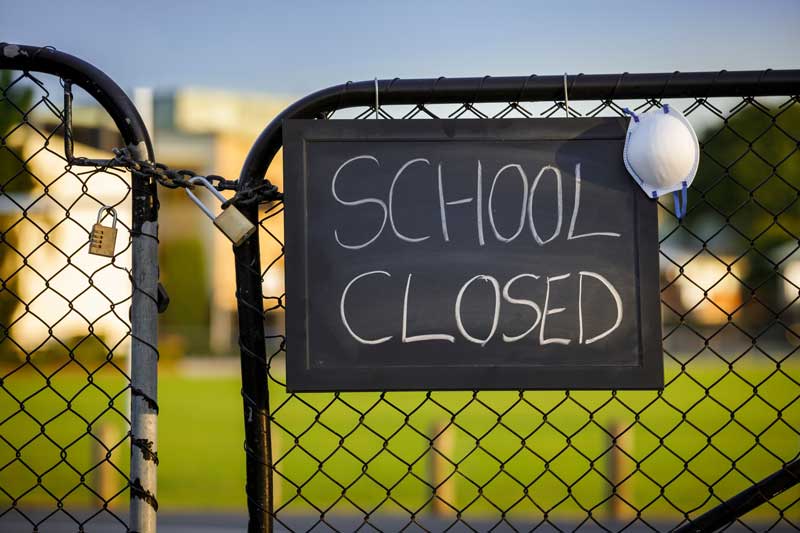American colleges and universities have a problem and—like baseball teams and health care companies—they are turning to predictive analytics and big data to help solve it. The problem is retention. Fewer than half of U.S. students graduate in four years and about 60% finish in six years, at a big cost to both families and institutions. The statistics are even worse for first-generation students and those from low-income backgrounds, perpetuating social inequities.
A solution lies in predictive analytics: analyzing large sets of data to discern patterns and spot students in danger of dropping out. A growing number of colleges and universities are incorporating predictive analytics and big data to monitor student progress and intervene quickly when there’s trouble. Here’s how.
Certain classes predict success… or failure
This story starts at Georgia State University, a large research university which enrolls many low-income and minority students. In 2009, university president Martin Becker made a renewed commitment to graduating people of all backgrounds. As part of that effort, the university analyzed a decade of records on every student, every grade, and every course. The analysis revealed that certain classes are reliable predictors of success… or failure. The classes that “matter most” are not always those you’d expect. For example, consider Georgia State’s nursing students. A bad grade in introductory math turned out to be a better predictor of their performance than a bad grade in a foundational nursing class. Fewer than 10% of nursing students who earned a C in introductory math graduated, compared to about 80% of those with a B+ or higher grade.
Similar processes at different universities found different courses with predictive power. At University of Arizona, it was an English composition class. Only 41% of students who got a C in freshman writing ended up graduating, while 61% of the B students and 72% of the A students earned their degrees. A basic biology class proved pivotal for El Paso Community College’s nursing students, while passing a U.S. history class appeared key to graduating from Middle Tennessee State University.
Changes to student advising
These data-driven insights may revolutionize student advising in higher education. Georgia State and other early adopters draw on analytics to precisely target student support. In the past, advisers usually focused on a student’s overall GPA, where the occasional poor grade did not set off alarms. With analytics, these universities now know the paths that successful students have followed. When a student veers off that path, such as performing poorly in a pivotal class or signing up for the wrong class, advisers are alerted and reach out to the student with suggestions. Georgia State estimates that its system automatically sent more than 50,000 messages suggesting that advisers and students meet to discuss an issue in its first year. Advisers steered about 2,000 students into the right classes for their major in 2016 alone.
Big data analytics have brought other changes on campus. Georgia State and Middle Tennessee both doubled their advising staff to deliver these targeted interventions, while Middle Tennessee and other schools increased tutoring and revamped some of their foundational classes based on data-driven insights. Arizona State found many of its students were unprepared for college math. So it eliminated lecture-based math classes and replaced them with individualized coursework that students complete on a computer with a tutor. The software continually assesses students’ progress and adapts to give them more practice in their deficiencies.
Demonstrated results
Arizona State’s new approach to math has increased success rates in that coursework from 65% to 85%, while its overall four-year graduation rate has increased 19 percentage points since 2006. Georgia State also demonstrated results: three years after implementing data analytics, the school’s black, Hispanic, low-income, and first-generation students were graduating at the same rate as the student body overall—a first in U.S. higher education. Ten years ago, 31% of white students graduated. Now, 50% do. Today, 56% of African-American students graduate, compared to 26% ten years ago. For Latinos, graduation rates jumped from 22% to 55%.
Sharing innovations
With these numbers, Georgia State University leads the nation in closing the gap between white and minority graduation rates, which benefits students, families, the universities, and society as a whole. Georgia State and Arizona State are sharing what they have learned as part of the University Innovation Alliance, a group of 11 institutions pioneering the use of big data to boost student success. The 11 campuses now are producing 25% more low-income graduates per year, nearly 6,000 additional graduates annually. The alliance is on track to produce an additional 100,000 graduates by 2025. “We believe this work is a movement,” the alliance writes, “and we are just getting started.” It is a laudable mission that’s already producing impressive results.
Sources
“How Do Universities Use Big Data?” by Holly Else, Times Higher Education, April 13, 2017.
“Will You Graduate? Ask Big Data,” by Joseph B. Treater, The New York Times, February 2, 2017.
- Survey Says: Healthcare CIOs Don’t Fully Trust Their Data - November 8, 2018
- Microhospitals: How a New Healthcare Model Leverages Business Intelligence - September 25, 2018
- How New Database Technology Fuels Oil Company’s Analytics - September 20, 2018



